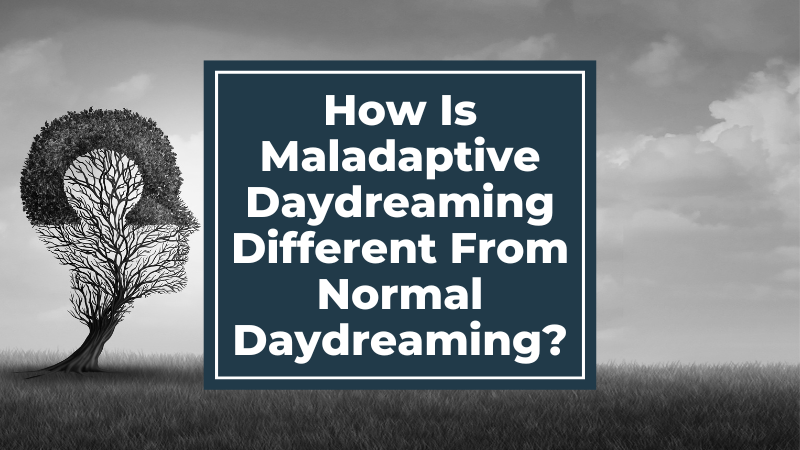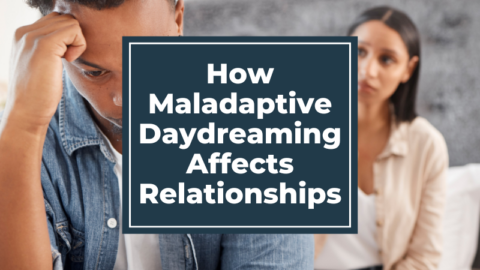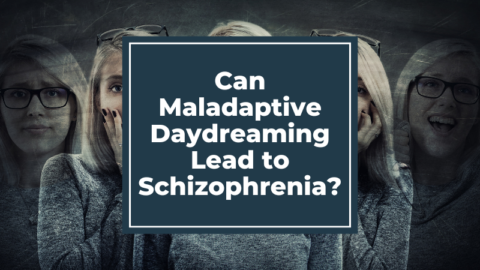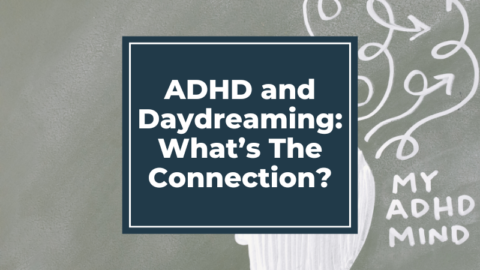Daydreaming is a part of almost everyone’s lives, in one way or another. Normal or adaptive daydreaming is a common and healthy occurrence. However, for a multitude of different reasons, sometimes daydreaming can get out of hand and cross over into the realm of maladaptive daydreaming. Understanding the difference between what is considered normal daydreaming and what are characteristics of maladaptive daydreaming can be a crucial first step in identifying that something is wrong.
Here are some interesting facts related to daydreaming and its prevalence:
- Studies suggest that individuals engage in daydreaming approximately 15-20% of their waking hours, which means that people tend to drift into daydreams multiple times throughout the day.
- Research has found that women tend to daydream slightly more often than men.
- Daydreaming has been associated with enhanced creative thinking and problem-solving abilities. It allows the mind to wander freely, making connections between ideas and exploring alternative perspectives.
- Daydreaming has been linked to positive emotional experiences. It can provide a temporary escape from stress, boredom, or negative emotions and offer a sense of pleasure, relaxation, or happiness.
Let’s go over more of the differences between adaptive and maladaptive daydreaming below, starting with their official definitions.
How Is Normal or Adaptive Daydreaming Defined?
Regular daydreaming, also known as normal or adaptive daydreaming, is a common and natural cognitive phenomenon that involves the creation of vivid mental images or fantasies while awake. While there is no specific medical or psychiatric definition for normal daydreaming, it is generally understood as a form of spontaneous and imaginative thinking that allows individuals to mentally escape or explore alternative realities.
Normal daydreaming is typically a brief and transient state of mind that occurs in response to boredom, day-to-day tasks, or as a means of mental relaxation. It is considered a normal part of human experience and does not cause significant distress, impairment, or interfere with daily functioning.
The content of daydreams can vary widely and may involve scenarios, stories, memories, desires, or creative ideas. Daydreaming can serve various purposes, such as providing entertainment, enhancing problem-solving skills, fostering creativity, and allowing individuals to process emotions or aspirations.
How is Maladaptive Daydreaming Defined?
Maladaptive daydreaming, on the other hand, is a psychological phenomenon that involves intense and extensive daydreaming that goes beyond what is considered normal or adaptive. Although maladaptive daydreaming is not officially recognized as a distinct psychiatric disorder in the Diagnostic and Statistical Manual of Mental Disorders (DSM-5), it has been proposed as a potential condition that warrants further research.
Some of the defining characteristics of maladaptive daydreaming include:
- Excessive and Compulsive Daydreaming: Maladaptive daydreamers engage in prolonged and intense daydreaming episodes that can last for hours, often becoming a central focus of their lives. They may have an overwhelming urge to engage in daydreaming and find it difficult to control or stop the behavior.
- Distraction and Impairment: Maladaptive daydreaming can significantly interfere with daily functioning, relationships, and responsibilities. Individuals may find it challenging to concentrate on tasks, maintain relationships, or complete work or academic obligations due to excessive daydreaming.
- Emotional Involvement: Maladaptive daydreaming is often emotionally charged, with individuals experiencing strong emotions, such as excitement, joy, or even distress, during their daydreaming episodes. The daydreams may serve as a means of emotional regulation or escape from real-life difficulties.
- Real-Life Consequences: Maladaptive daydreaming can lead to negative consequences, including neglecting personal relationships, academic or occupational underperformance, social isolation, and a decreased sense of fulfillment from real-life experiences.
It’s important to note that while maladaptive daydreaming is a term used to describe this phenomenon, it is still a relatively new concept in the field of psychology and requires further research to better understand its causes, mechanisms, and potential treatment approaches.
The Differences Between Adaptive (Normal) Daydreaming and Maladaptive Daydreaming
Maladaptive daydreaming differs from normal daydreaming in several key aspects. While daydreaming itself is a common and normal cognitive process, maladaptive daydreaming involves excessive, intense, and prolonged daydreaming that interferes with daily functioning and causes distress or impairment in various areas of life. Here are some differences between maladaptive daydreaming and normal daydreaming:
- Duration and frequency: Maladaptive daydreaming is characterized by long and frequent episodes of daydreaming that can last for hours, often on a daily basis. Normal daydreaming, on the other hand, is typically shorter in duration and occurs sporadically.
- Control and interference: Individuals with maladaptive daydreaming have difficulty controlling or stopping their daydreaming episodes, even when they want to. It becomes a compulsive and intrusive behavior that disrupts their ability to concentrate on tasks, engage in relationships, or meet daily responsibilities. Normal daydreaming, in contrast, is typically within the individual’s control and does not interfere significantly with their daily functioning.
- Compulsive behaviors: Maladaptive daydreaming often involves accompanying repetitive behaviors or movements, such as pacing, rocking, or talking to oneself while daydreaming. These behaviors serve as a way to further immerse oneself in the daydream and are not typically seen in normal daydreaming.
- Time perception: People with maladaptive daydreaming may lose track of time or find that significant portions of their day are consumed by daydreaming. They may neglect important tasks, responsibilities, or social interactions due to their intense preoccupation with daydreaming. Normal daydreaming, although it can be immersive, typically does not disrupt one’s sense of time or daily functioning to the same degree.
- Emotional distress and impairment: Maladaptive daydreaming is often associated with feelings of distress, dissatisfaction, or frustration when not engaged in daydreaming. It can interfere with relationships, work, and other areas of life, leading to impaired functioning and reduced quality of life. Normal daydreaming, on the other hand, is usually a pleasurable and enjoyable experience that does not cause significant distress or impairment.
- Involuntary nature: Maladaptive daydreaming is often characterized by a lack of control over the daydreaming episodes. Individuals may find themselves entering into daydreams involuntarily and may struggle to stop or limit the intensity and frequency of their daydreaming sessions. Normal daydreaming, on the other hand, is typically more within one’s control and can be initiated or stopped at will.
- Impact on daily functioning: Maladaptive daydreaming can have a significant impact on an individual’s daily life and functioning. It may interfere with their ability to concentrate, complete tasks, maintain relationships, or meet responsibilities. Normal daydreaming, although it can momentarily distract from ongoing activities, generally does not have such a substantial negative impact on day-to-day functioning.
- Degree of absorption: Maladaptive daydreaming is often characterized by a high level of absorption and immersion in the daydreams. Individuals may become so deeply engrossed in their daydreams that they may lose touch with their surroundings or have difficulty distinguishing between fantasy and reality. Normal daydreaming, while it can be vivid, tends to be less intense and all-consuming.
- Disturbance in sleep patterns: Some individuals with maladaptive daydreaming may experience disruptions in their sleep patterns due to excessive daydreaming, leading to sleep deprivation or insomnia. Normal daydreaming does not typically interfere with one’s sleep.
- Emotional intensity: Maladaptive daydreaming is often associated with intense emotional experiences within the daydreams. The emotions felt during these episodes can be highly vivid and powerful, sometimes resembling real-life emotions. Normal daydreaming, while it can evoke emotions, tends to be less intense and more fleeting.
- Escapism and avoidance: Maladaptive daydreaming often serves as a form of escapism or avoidance from real-life problems, stress, or discomfort. Individuals may use daydreaming as a coping mechanism to retreat into a fantasy world. Normal daydreaming, while it can offer a temporary mental escape, is usually not driven by a need to avoid reality or cope with significant distress.
It’s important to note that the line between maladaptive daydreaming and normal daydreaming can be subjective and may vary from person to person. If you suspect that your daydreaming habits are causing significant distress or impairment in your life, it may be helpful to consult with a mental health professional who can provide a proper assessment and guidance.
Remember that maladaptive daydreaming is still an area of ongoing research, and there is no universally agreed-upon definition or diagnostic criteria for the condition. The understanding and recognition of maladaptive daydreaming continue to evolve, and further research is needed to better understand its causes, mechanisms, and optimal treatment approaches.
Do you believe that you have ever experienced normal daydreaming? Or can you only ever remember maladaptive daydreaming? Share your thoughts with us and other maladaptive daydreamers by joining the Maladaptive Daydreaming Forum.









